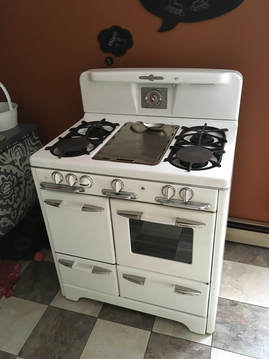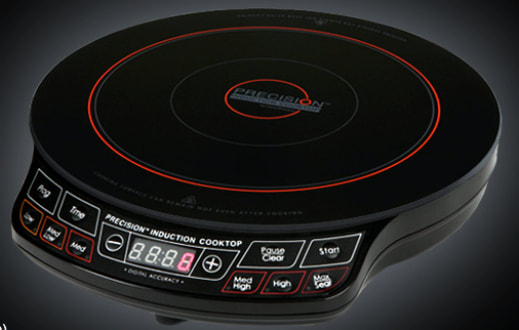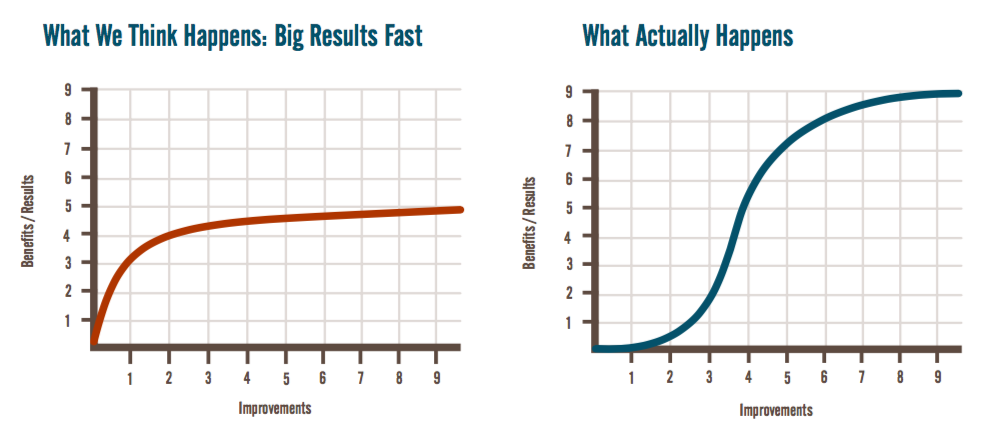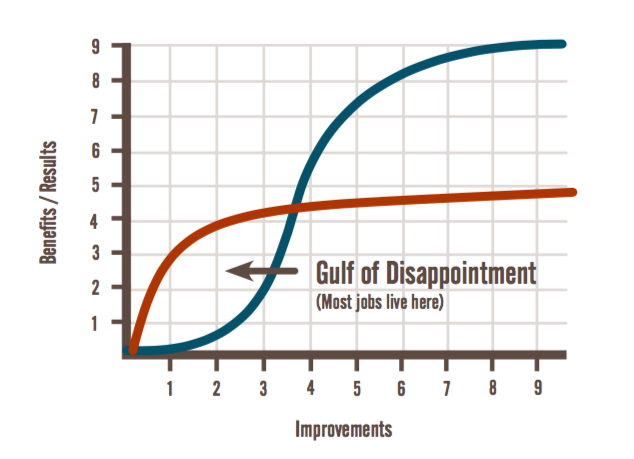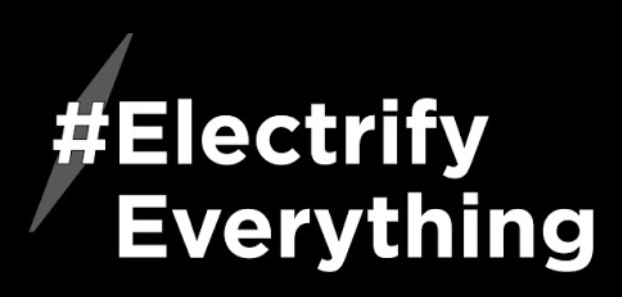|
Powering our lives with renewable energy is the future. We can do it if we #ElectrifyEverything!
The only type of renewable energy we are really good at making is electricity. So if we want to use renewables, we need to choose things that run on electricity. We have to #ElectrifyEverything. There's even a lot of a agreement amongst academics about this, and that doesn't happen much! We have two big energy users in our lives: houses and cars. How do we run them on electricity? Until recently, electric houses and cars were a sacrifice. Electric stoves weren't great to cook on. Heat pumps didn't work well in cold climates. Electric cars were glorified golf carts. All that has changed in the last few years with things like induction cooking, cold climate heat pumps, and Tesla cars. (The Chevy Bolt and Nissan Leaf are pretty good too.) Now that there are good electric options for our homes and cars, there is a viable path to #ElectrifyEverything that is not only just as good as using fossil fuels, but often is better. Here are the 7 steps to do it:
Let's dig in to what each step means. Or you can watch the video:
7 Steps to #ElectrifyEverything
1. Buy renewable electricity. Now. It mystifies me why we don't see this recommendation more. With a phone call or an email, you can make about 1/4-1/3 of the energy you use renewable. It's often the same cost or just marginally more thanks to inexpensive renewable electricity. The odds are very high that for no money and an hour of your time you can wipe out 1/4-1/3 of your carbon footprint! If you live in one of 20 states with "deregulated" electricity, you can choose who you buy your electricity from. I live in Ohio and wrote an article about how to switch to renewable electricity in Ohio. Google "energy choice" and your state to see what's available. If you don't live in one of those states, there are multiple companies out there who help you switch to renewables like Arcadia Power and Green Mountain Energy. For example, Arcadia gives you the choice between 50% renewable energy for free or paying a bit extra to get 100%. (I get nothing for saying this BTW.) This is a critical step because it shows consumer demand for renewable electricity. The power you buy will likely be made elsewhere (mine is made in Kansas and Oklahoma), but somewhere your money is being used to build a renewable energy plant. Don't let people discourage you, this is a very important step. Yes, it is essentially an accounting function and is a bit of a half step, BUT it's the only decent tool we have, and this is how markets move. Think of it like a vote. Your vote doesn't really matter, but combined with others, it does. Organic food is now common because enough people voted 3 times a day with what they ate. Go figure out how to switch! When you do, report how you did it to the Electrify Everything group! 2. Do the easy stuff. When I say easy, I mean things that aren't connected to other things. Changing how your home is heated is typically quite difficult and interconnected (and is steps 4 & 5). But lots of things in your home can be changed without affecting anything else. As appliances need to be replaced, replace gas ones with electric ones.
Cooking: The Lynchpin to Ditching the Gas Meter If you're going to truly #ElectrifyEverything, you need to dump your gas meter. That means you need to get rid of every gas powered appliance in your home. For the most part, this is no big deal. If you have hot water for your shower, do you care how it got hot? Of course not. Same thing goes for heating your home. If it's comfortable, it doesn't really matter how it got that way. Enter the gas stove: This is the one gas appliance that most people have a strong preference for. Gas gives fast visual feedback with the flame and adjusts up and down instantly unlike electric cooktops. There is a really good electric option now, it's called induction. Induction adjusts instantly like gas, and actually turns down a good bit lower. My business partner has an induction hot plate, he sets it to 130 degrees and de-crystallizes honey. Try that with gas! I can feel you jamming up. "But I love my gas!!" Here's all I ask: don't make this decision from an emotional perspective. Try out an induction hot plate, see what you think. If you hate induction after giving it an open minded try, that's ok. Then you made a rational decision, not an emotional one. (Important note: a magnet must stick to the pan for induction to work, it uses a magnetic field to heat the pan and your food.) Here is a good induction hot plate to try, the NuWave.
Try cooking an egg and boiling water, at a minimum. I'm shocked how fast our induction stove boils water.
If you change to cooking with induction, the single largest barrier to going 100% renewable and getting rid of your gas meter is gone. Please, after you switch to renewable energy, go buy an induction hot plate. Report your findings. 3. Make electrification sexy. Advocate apolitically. Elon Musk has done a wonderful thing with the Tesla Model S and Model X. He has made electric cars sexy. The Model S is the quickest production car both 0-60 and in the quarter mile. Teslas are status symbols. The new Model 3 (which makes the lineup S3X, soon to be S3XY with the new Model Y) has 400,000+ deposits. I'm one of them. I haven't been this excited for a car in a long time. I drove to Ann Arbor Michigan and stayed up until 6 AM to drive one. I stopped getting car magazines, which I've gotten since I was 12, because I'm only interested in electric cars now, and basically Tesla is the only really, really good one. Many more good models are coming in the next few years. Also thanks to Tesla, largely because they took over the luxury car market, going from 0 sales in 2012 to outselling all other models in 2015. Other automakers didn't like that, and are rushing to electrify their lines. That's a heck of an accomplishment since until now electric cars were glorified golf carts with very few exceptions like GM's EV1. Our challenge is to make electric houses sexy like Elon Musk did for electric cars. Well done electric homes are better places to live, they are far more comfortable, healthier, longer lasting, and more efficient than fossil fuel heated ones. More on that in step 4. I've written about two of these, which we call "Houses of the Future." Here are detailed case studies a 1900 one and a 1918 one. They really are awesome. Making Electrification Sexy: By Cooking The first thing to do is to show off your induction hot plate or stove. Have your friends over for dinner and cook on it. Show them first hand what it's like. It's a really pleasant form of advocacy. If you can help them to like, and then buy, and induction stove, you just made it much, much easier to electrify their home. Advocate Apolitically This is a really important one. Do not make #ElectrifyEverything political. There's no need. Renewable energy and energy efficiency are two of the very few bipartisan issues. There may be disagreements about why they are good, but not that they are good. When you figure out how to buy renewable electricity, write an article on LinkedIn or Medium and share it with your friends. Tell them what you did. Talk about your new electric car or your new heat pump water heater. Make it cool. Make other people want it. Do an Elon Musk. Make it sexy. And keep the politics out of it. 4. Do your homework. OK, the easy stuff is done. You already buy renewable electricity. You bought an induction stove, a heat pump water heater, and an electric car. Go you! You even upgraded your electric panel. Now we have the most difficult project: heating your home with electricity. This is best done with a heat pump, which is basically an air conditioner that can run backwards and heat as well as cool. I did this video about how they work and the various options. They can work in surprisingly cold climates, they work here in Cleveland, not exactly a snow-free environment! This is where there's some homework to do. Don't just swap your furnace for a heat pump. I got an email last week from someone who did that, he got a $1300 electric bill after the recent cold snap. That is not sexy. If done well, they can cost the same or less than a furnace heated home, here's a direct comparison between two of our projects. But let's not focus on costs, because that is a dangerous path. Electrification cannot be the only goal! If your only goal is to electrify your home. Stop now. Go no further. I'm serious. Only electrify your home if you are trying to make it better. There need to be things that really bother you about it, like these:
Those problems serve as goals. If you don't have something to solve, the odds are very high that you will fall for a "cheaper but just as good" option and find out that it's a lie. It wasn't just as good. In fact it sucked, but now it will cost thousands to redo. We've watched clients waste tens of thousands trying to solve problems. Ranked Pain List The first piece of homework is to make a Ranked Pain List.
Learn how to fix root causes Once you have your ranked pain list and decide it's worth figuring out what to do to fix it while electrifying your home, it's time to learn how your home really works. Don't waste time and money trying things that don't work. The root cause to most comfort problems is air leakage. This is very counterintuitive, but you can read 11 very detailed case studies on how sealing up client homes solved problems. A leaky house is hard to control like a leaky boat is to keep afloat. Very few contractors understand this well, so it's good to bone up yourself. I wrote The Home Comfort Book to teach how your house works in an entertaining manner. The first chapter of it, Home Comfort 101, is a free download: Once you know what you want to fix and understand how your home works well enough to tell the contractors who know how to solve problems from the ones that don't, it's time to take the next step. 5. Plan and execute your Home Performance project Home Performance is the art and science of making homes comfortable, healthy, long lasting, and efficient. A Home Performance project typically consists of a mix of insulation and air sealing on one hand, and HVAC (heating and cooling) on the other. Most of these projects don't work well because they aren't deep enough. Too many are looking to cover up symptoms rather than solving root causes. This lands them in what we call "The Gulf of Disappointment".
Here's how it works. We're used to thinking that the first few changes we make will make a big difference. That's the red line. We also call it the Low Hanging Fruit Curve.
We find with Home Performance that low hanging fruit is poisoned. It's often surprising how far you have to go to get a result. The truth is the blue line, where once you go far enough results start showing up fast.
When those two curves are laid on top of each other, you can see the Gulf of Disappointment. The fellow with the $1300 electric bill is living there.
I've lived there when I was an insulation contractor. Sometimes the results sucked. Don't swim in the Gulf of Disappointment. This is where planning comes in. Planning Balances 3 Things
That's where we are very strong advocates for planning. You can read more about planning in Home Comfort 101. Project Execution An industry colleague, Gavin Healy of Balance Point Home Performance, says that Home Performance is not a silver bullet, but rather 1000 silver BBs. He's right. Success or failure of these projects rests on getting a bunch of little details right. Particularly air sealing details (another topic in Home Comfort 101.) To get it right, you want someone to help stand behind you and watch the details. We call these Home Performance Specialists. After helping plan your project, they can help you get bids, watch the details of installation, and help make the final tweaks to make your home awesome. Did I say awesome? I mean sexy. Because you managed to #ElectrifyEverything! 6. Shout from the rooftops! Congratulations! You electrified your entire life! Now it's time to share that experience. You were already having dinner parties. Now you might consider having house guests so they can experience the remarkable comfort of a high performance, electrified home. Now your apolitical advocacy will have a stronger voice because you've done a major project. Leverage that voice. Leverage your experience. Tell your story. 7. Go Net Zero Net Zero means producing as much energy as you consume. Typically that's done with solar panels, and increasingly with a battery for power backup (and also helping out the grid.) Note that going Net Zero is last on the list. That's on purpose. There are two main reasons for this:
7b. Don't feel bad if steps 1-4 are all you can do! For many, getting rid of the gas meter is not an easy option. That's ok! Do steps 1-4:
In fact, it's my personal position. I have this challenge with our own home, an 1835 former general store that needs brand new HVAC systems to be able to use all electric technologies. The Ranked Pain List for my wife and I is not long enough to justify what it will take to do this. Here's what we've done:
One Step at a Time That's all my wife and I can do for now. And that's ok! #Electrify Everything is a path. Take it one step at a time. Oh, and be very careful to avoid being judgmental of others. Respect where they are on the path. Be cognizant of virtue signaling, or appearing morally superior. Remember, make electrification sexy. Make it something your friends want. Use the #ElectrifyEverything hashtag everywhere you can. Oh, and join the Facebook group so we can figure this out together and share what we learn! Just click the banner. Thanks, and good luck! |
AuthorNate Adams is fiercely determined to get feedback on every project to learn more about what works and what doesn't. This blog shows that learning process. |
ServicesCompany |
Buy The Home Comfort Book!
© COPYRIGHT 2017. ALL RIGHTS RESERVED.
|
 RSS Feed
RSS Feed

